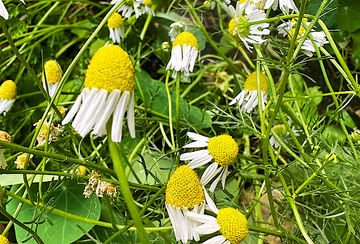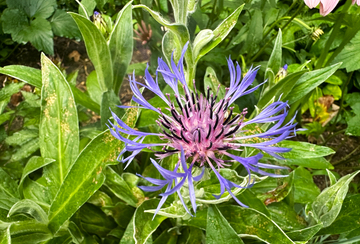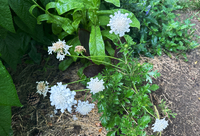
Chamomile

Chamomile brings up restful images of open plains basking in bright sunlight. Everything about this plant, from its texture to its sight and scent, engenders peace.
Its sappy stems release a green apple fragrance that wafts through the air on hot summer afternoons, as the rosettes stretch their necks in search of sunlight.
Chamomile, just like other wild meadow flowers, is not particular about its growing conditions, but it does need plenty of sunshine, good air circulation, and soil that drains freely.
Its medicinal properties run the gamut between relieving anxiety and promoting restful sleep and fighting back fever, pain, and inflammation.
A bit of an acquired taste because of its bitter flavor, it is as safe as any medicinal herb can get, although it can cause adverse effects when used in excess.
Harvest it in the morning, after the dew has dried and the flowers are still half open.
Both the flowers and stems have a high water content. Make sure they're fully dry before storing them, or let them wilt for a few hours if you intend to use them fresh in creams and salves.

Centaurea

I've recently rediscovered centaurea, an old-fashioned cottage garden favorite that thrives in the sun and open plains.
Its flowers are known for producing abundant nectar, especially in alkaline soils, which makes them perfect for attracting butterflies and bees to your garden.
Commonly known as cornflowers, they earned this name by growing wild in corn and wheat fields, where they can become invasive.
Centaureas belong to the aster family and can be found in both annual and perennial varieties, displaying charming colors like pink, purple, blue, and white.
The wispy, delicate lacy texture of their flowers brings interest and variety to the mixed flower border.
The plants have a compact habit and don't grow very tall, making them perfect for the front of the border where they bloom profusely from May to July.
Centaurea is a medicinal plant as well, a bitter liver and gallbladder tonic and a remedy for fever and edema.
